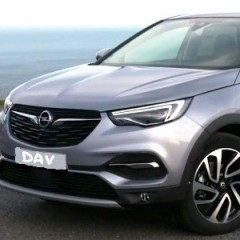Search the Community
Showing results for tags 'tires'.
-
I am holding back to change tires because I think mine can still last 1 year or another 20k. And also I want to change tires but I don't want to be cheated of my old tires. Is there still some value for my used tire? my Falken326 205/45/16 tires are about 1 year old and 22k. I want to change because they are not the right profile for my ride. I don't get a good feel when ABS is activated and the speedometer is more than 3% off. The best match should be 205/50/16.
-
Request via PM from Mouse A fellow MCFer have some problem with his tires and he is unable to start a new thread as he is still a newbie (Post count less than 15). I have start this thread so that he can post his question here. Kindly wait for Mouse to post his question before replying to this post. Thanks. Aside to Mouse You may post your question in this thread. A thumbs up for you for observing our rules. Thanks for not clocking posts in order to start a new thread.
-
Tires are often the most neglected parts of a vehicle. And yet, they are among the most important and easily cared for. By adopting these few simple tire maintenance practices, you can increase your vehicle's fuel efficiency, reduce harmful emissions, save money and make your vehicle safer. Measure your tire pressure monthly using a good quality tire gauge. A visual inspection is not sufficient to detect under or over-inflation problems. Have your tires aligned annually. Tires should be balanced approximately every 20 000 km, or when drivers feel a vibration. Rotate your tires regularly. Monitor tread wear and replace tires when your tire tread is worn out. Conduct a visual check for embedded stones, glass and other foreign objects that could work their way into the tire and cause a leak. Alignment Proper alignment is an important part of tire maintenance. Poor alignment will cause your tires to wear unevenly and you may experience handling problems, such as "pulling" or vibration. Poor alignment will also increase your fuel consumption. Common practice is to have your alignment checked annually, or every 25,000 km. Balancing Wheels need to be balanced. If they are out of balance, you may feel a pounding or shaking through the steering wheel or your seat. This pounding could shorten the life of suspension components, lead to uneven tire wear (bald spots) and increase fuel consumption. Rotation Regular rotation will minimize wear and prolong the life of your tires. Rotation will also reduce the risk of sudden tire failure. Front tires work harder than rear tires as they must bear the scrubbing action of steering as well as rolling wear. You can prolong the life of your tires by rotating them. Full size spares should be part of the rotation pattern. Rotate your tires according to the vehicle manufacturer's recommendation, found in the owner's manual. Or, talk to your tire professional to find out how - and how often - the tires on your vehicle should be rotated. Common practice is to rotate tires approximately every 10,000 km. Tread Tires are designed to grip the road, allowing your vehicle to start, stop and go around corners safely in any weather. The treads that accomplishes this wear out over time, but drivers can take precautionary steps to prolong the life of their tires. Properly maintaining your tires will increase their life. It is extremely important to check your tire treads for signs of wear. Proper treads allow for normal handling of your vehicle and help prevent skidding and hydroplaning. Tires are manufactured with a "wear bar" that tells you when there is less than 1.6 mm (2/32 inch) of tread depth remaining - when you see this wear bar, the tire must be replaced. You could also try the penny test: place a penny in the tire's groove with the Queen's crown facing down. If you can see the top of the Queen's crown, the tire needs replacing. Damage It is important to perform regular visual inspections of your tires for signs of damage and excessive wear. Look for embedded objects, such as rocks, nails or glass. Catching problems early can save you money and prevent a sudden tire failure. Storage When not in use, tires should be stored upright in an indoor location, out of direct sunlight or exposure to strong artificial light, heat, ozone (electrical motors) and hydrocarbons. If tires are stored on their rims, the pressure should be reduced to approximately 15 psi to avoid cracking or deformation
-
Factors Affecting Pressure The air pressure in your tires and tire tread life are affected by temperature, road conditions and driving speed. Tires are permeable and can lose up to 2 psi per month. More air is lost in hot weather as the pores in the tire material expand. To maintain proper inflation levels, measure the air pressure in your vehicle's tires at least once a month. Changes in ambient temperature cause changes in tire pressure. This is particularly important in Canada's climate where temperature swings of 20 to 30
-
TIRE MYTHS (courtesy Goodyear Tire Engineering. - 1. - I should inflate my tires according to the pressure indicated on the tire sidewall? The handwriting's not on the wall the tire sidewall, that is. The tire's maximum inflation pressure not the recommended is molded on the sidewall. For normal operation, follow inflation pressure recommendations in the owner's manual or on the vehicle placard located in the glove box or on the door post. The function of air in a tire is to support the weight-carrying potential of a vehicle, according to Bill Egan, chief engineer of Goodyear advanced product design. (Attribute all answers to Egan.. - Thus, tires are built and rated to carry certain load capacities, and automakers select those sizes compatible with the ride, handling, traction, fuel economy and load requirements of their vehicles. Vehicle manufacturers determine inflation pressures based on these requirements. 2. - A tread pattern is needed to provide great traction on dry roads. A racing slick a tire without any tread provides the ultimate in dry traction due to the maximum amount of rubber touching the road. A tread pattern, with its groove voids, actually impairs this adhesion capability on dry roads. Tire tread acts as a squeegee on wet roads to remove water from under the tire and channel it through the grooves for improved wet traction. That's why Goodyear Aquatred IIs directional, AquaChannel TM tread design grabbed so much attention literally on rain-slick roads and otherwise when it was introduced. 3. - If not for the cost, race tires would be the ideal street tire for high-performance vehicles. Race tires are engineered for specific track surfaces and race vehicle suspensions. On a high-performance vehicle, race tires would wear too quickly, provide an uncomfortable ride and deliver poor handling on wet or icy roadways. But in many cases, the technology used at the racetrack is engineered into high-performance street tires. For example, ultra-high-performance tires, such as Goodyear's new Eagle F1 Steel, employ a stiffer carcass and aggressive tread compounds to provide the performance attributes required for high-performance vehicles. 4. - Performance tires wear out faster because of the sticky compounds. Performance tires may wear out faster than conventional family-car tires; however, tread rubber polymers aren't the culprits. In fact, new polymers and ultra-tensile steel constructions are making performance tires last longer than ever. Industry-wide, performance tires average about 45,000 miles in tread life, similar to the figures for family-car passenger tires. Fast wear usually is due to high-horsepower vehicles fitted with the tires and aggressive driving. Jackrabbit starts and quick stops can shorten the life of any tire. 5. - Wide tires provide better traction under all weather conditions. In fact, putting oversized snow tires on a car delivers better snow traction. In fact, the opposite is true. Wide tires tend to 'float' on deep snow and the tread lugs never have a chance to 'dig' through the snow to the road surface to gain traction. Narrow tires are a better option in deep snow. The tire acts similar to a knife cutting through butter; the blade works best when using the narrow edge to push through the butter rather than the wide flat side of the blade. 6. - All-season tires are so good that winter tires are never needed. In some parts of the country this may be true, but if you live in the northern-most states or in Canada, the traction provided by winter tires can't be beat. Winter tires reign supreme in rural areas where snow remains on the road for days. They provide 25 percent improved traction in deep snow over all-season tires. Metal-studded tires deliver up to 40 percent greater traction on hard-packed snow and ice over all-seasons. 7. - Never rotate tires from side to side, only front to back. Radial tires can be crossed from side to side in the rotation pattern. The old front-to-back rule applied to bias ply tires. Regular tire rotation every 6,000 to 8,000 miles promotes more uniform wear for all tires on a vehicle. Goodyear recently designed a light truck tire system that requires no rotation, the Wrangler RF-A, which provides a rear tire with a different tread design from the front tire. 8. - Put your new tires on the drive-wheel position to get the most traction. This is only true on a rear-wheel-drive vehicle. In all cases, install new tires on the rear axle. Most tire buyers purchase new rubber for the drive-wheel position to get the most traction; however, by doing so, they transfer most of their traction capabilities from the rear and make it susceptible to oversteer. The vehicle's rear will fishtail and swing out in fast cornering or emergency maneuvers. 9. - Sticking your fingernail in the tread can help pick the tire with the softest compounds, and thus, the best adhesion. It's sort of like kicking the tire, but with another part of the anatomy. Tread compounds only tell part of a tire's story. Tread pattern, tire shape and the tire footprint shape on the pavement provide clues to its adhesion capabilities. Don't rely on the fingernail test. 10. - The government tests tires for traction, temperature resistance and treader and assigns grades that are molded onto the sidewall. Uniform Tire Quality Grading is a federal law that requires tire manufacturers to grade their tires for treader, traction and temperature resistance. Tire manufacturers, not the government, test tires and assign their own grades. Unfortunately, the government has not prescribed a formula for converting the manufacturers test results into grades; therefore the numbers are not objective. According to the Federal Trade Commission, treader grades are for comparison purposes only and are not intended to be converted into anticipated or promised tire mileage. 11. - Tires are made of a single rubber compound. Several polymers are used in a tire, depending on their performance characteristics. Run-flat tires, for example, use heat-dissipating polymer reinforcements that stiffen tire sidewalls, while tread compounds affect traction, treader, rolling resistance and noise. In the case of the Eagle F1 Steel ultra-high-performance tire, its AATRAX triple polymer tread compound system provides improved handling and wet and dry traction without sacrificing treader, snow traction, rolling resistance or noise. 12. - Well-engineered tires will overcome deficiencies in the vehicle. Even premium tires can show signs of premature or uneven treader and imprecise steering when vehicles have defective alignment or suspension parts. Correct vehicle alignment is a must and should be checked periodically. Improper alignment causes excessive tire wear as well as increases fuel consumption. Regular tire rotation about every 6,000 to 8,000 miles promotes more uniform wear for all tires on a vehicle. 13. - An ultra-low rolling resistant tire provides outstanding fuel economy. A tire engineered for low rolling resistance would provide horrible fuel economy when it is run under inflated. Running tires 20 percent under inflated by 6 to 7 pounds per square inch wastes fuel usage by as much as 10 percent. That amounts to Americans wasting nearly 4 million gallons of gasoline daily. Tire care is crucial in saving money at the pump. 14. - An undulation on a tire sidewall is a weak spot that could lead to tire failure. An undulation is created where materials overlap each other in the tire carcass, and it actually is the strongest part of the tire. Still, motorists perceive a 'wave' on the sidewall as a defect. Goodyear's new ultra-tensile steel reinforcement eliminates this material splice and overlap. Ultra-tensile steel should reduce sidewall undulations found in polyester reinforced tires. 15. - Tires are a low-tech commodity, and price should determine what to buy. Consider the rain, run-flat and performance tires on the market today. Time and technology have improved the quality and value of today's tires. Price should be only one consideration, along with the other factors that can enhance tire value and vehicle handling. For the industry, average passenger tire life has climbed from 24,000 miles in 1973 to about 47,000 miles today. No one would want to turn back the clock on tire developments or prices. On a cost-per-mile basis, tires from the so-called 'good old days' would cost more than three times that of the 65,000-mile warranted Goodyear Aquatred II radial tire. 16. - Before you buy a car, kick the tires. It might not tell you much about the vehicle or tires, but it could tell you whether your shoe padding is adequate.
-

Any place willing to take in tires brand new for trade in?
Fivegear posted a topic in Tyres and Rims
Hi, Will be getting my ride next week. Don't really like the Bridgestone tires that come with it. The Agent say cannot change or even top up to get other brand. So am wondering is there a place where they are willing to trade in my nearly brand new tires for another brand/model? -
anyone used these before.... think the model shud be Enduro. and since its exclusive to Comfort Delgro, it shud be of some bearing ?? and not to mention, its supposed to be chepaer by 40% !!
-
Hi guys, do you have any recommended shops that sells pirelli tires? the tire i'm looking at is the pzero rosso assimetrico. Would also like the try the rave reviewed CSC3, but stamford tires is selling them at the mad price of 400+ per pc for 215/40/17. Hopefully, the pzeros are cheaper
- 3 replies
-
- recommendations
- shops
-
(and 3 more)
Tagged with:
-
Bros, what is a pair of good tyres for this size 235/70/r16.
- 5 replies
-
- Tires
- recommandation
-
(and 1 more)
Tagged with:
-
Is it possible to do that? sorry i mean import rims. saw some on a webbie very swee leh.... http://www.discountedwheelwarehouse.com/CarSearchModule.cfm suppose to be able to fit my 2002 galant
-
Time to change tires again. Looking for super grip wet and dry..... noisy also nvm... 225/45/R17 Choosing between: 1. Goodyear Eagle F1 GSD3 (Thai) 2. Goodyear Eagle RevSpec RS-02 (Japan) 3. Dunlop Sports Maxx 4. Dunlop DZ101 Cheers
-
Selling 4 piece Goodyear Eagle F1 195 / 55 / 15... 15% to 20% used..$300 more details can call me @ 98522839..
-
Skoda man, just saw some Toyo Trampio R1R today. Solid tire man! Looks like semi-slick and the rubber is sticky when cold! Must be damn grippy man Anyone else can comment?
-
Hi, Am wondering whether is there a good deal out there in the market that allow drivers to go back for free nitrogen top up? How much?
-
HI ppl.. just wondering anyone has used these set of tires b4? How's the response like? Good for wet/dry running.. thread life ok?? Read some good reviews from tirerack.com .. so wish to validate and clarify with pp in the forum here. Thanks!
-
Hi, My MX5 spin/drift alot in the wet. Need to get a GOOD set of WET tires to minimise the "drifting" worse in the carpark with cement floor. Need recommendation for good wet tires.
-
Recently noticed an interesting occurrence to my rear tires after driving in heavy downpour n through puddles of mud water. My rear tires were both stained and the tyre shine was noticeably wash off leaving white stains. but the front wouldnt affected at all. I'm using Armourall's new endurance gel. The shine is However, for the past week such occurrence didnt happened although it rained.
-
any recommendations for 185/55/R14 or 185/60/R14?
-
hello All , anyone who have just got a new car and wanted to change their OEM tyres , do contact , willing to do a trade in for cash for your upgrade
-
hey guys anyone know how much to pump for an aftermarket tires example i just got BF G sport. so i heard mine friends say pump the air at night and can pump until 240 is it ok>>?? since performance tires can take higher presure?
-
Hi Bro, My current tires is falkan 512 and can last maybe another 3-4month or so. Anyone can recommend any budget 205/45/16 tires? Budget around 100-120 for each. Thanks
-
I was driving halfway last night after a certain "ROUNDING" session (so stupid, rounding. eveyone going in rounds ) then my tire wobble wobble...i thought what the hell happen. then i noticed I had a flat!!! I tried looking for nails but i couldnt find any!!! I took a pic this morning. Can anyone tell me how my tire can suddenly lose all the air inside all of a sudden?
-
Read this from BITOG. Check out CapriRacer's comments. A lot of information on why worn tires seem to give you better fuel economy than new tires. Thread compound and tire weight affects as well. Understand why. Thread design and depth have nothing to do with it. http://theoildrop.server101.com/ubb/ultima...c;f=44;t=000393
-
Just wondering what you guys will go for? 1. Don't rotate the tires. Worn the front 2 off, put the rear ones to the front and buy 2 new ones for the rear. 2. Do rotation timely and wear all 4 together. Once time's up, change all 4 new ones. Currently, I'm doing option 2. But each time, very hard on the pocket
-
Went to a nearby shop in Sembawang to see if the punctured 712 can be repaired. Alas it cannot as it is a sidewall puncture. It look like a piece of metal plate. Slow leak puncture. So needed new tires. Actually do not have an intention to purchase any from them but my "not so street smart" wife didn't say anything when they uninstalled the spare tire when I went to see what they have to offer. So I came out because the prices are not to my liking. $115 for a Falken 326 is Turkey Shoot to me with me being the turkey. I saw the spare tire uninstalled and said, install it back. They seemed unhappy about it. I insisted on them installing back my spare and so they relented. Asked what my budget is. I said 75-80/tire. So they put in the 326 on. Why 80 you might ask? I saw the Tyrebiz banner. They are affiliated with Tyrehub. A 195/50-15 costs 80 when I spied online. So I knew they would agree to this price quite readily for this low-end Falken. Anyway, this wouldn't have happened if my wife has been more "protective" about the ride. So initial 40km on this low end Falken? Compared to the 712 I had previous, the 712 sounded like an approaching tsunami since day one coming closer everyday . The 326 are very quiet. Might last very long because they are bidirectional thread tires. I know they are not scrubbed in yet but I attempted some really aggressive maneuvers. I can only say that for a A rated traction tire, they are predictable. Knowing Falken, the 115 I had before were predictable until after 25k. Will see by then. Steering response is very good for this tire. It the Aveo felt like a boat on the 712 (could be the grip) but the 326 makes it feel like it is flying in the clouds. Dark clouds loomed and I thought I can try to test some aquaplane resistance for this "all-season" tire but the clouds constipated and it didn't rain. So maybe another day for this. My final first time thoughts? Pretty OK for a street going tire but not for PG sessions.








